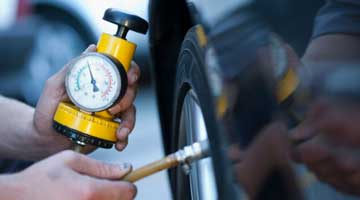If you’re new to the world of electric vehicles, it’s more complicated than you might imagine. To help keep it simple, we’ve narrowed it down to three kinds - pure electric and two types of hybrid.
Battery Electric vehicles (BEVs) don’t have a petrol engine, fuel tank or exhaust pipe. You plug them in at a charging point and they produce zero emissions, which means zero road tax. Happy days.
When it comes to hybrids there two types: those that plug in, (Plug in Hybrid Electric Vehicles or PHEVs) and those that don’t (Hybrid Electric Vehicles or HEVs).
The plug-in models start in electric mode, and run for around 30-40 miles on electric until the fuel kicks in. According to studies, they can save you up to 60% in energy costs
Non plug-in models, like the Toyota Prius Hybrid, are more like traditional cars. The engine is the main power source, but uses something called ‘regenerative braking’ to power the battery.
As many of us know, sales of new fuel-powered vehicles, as well as HEVs like the Prius, are due to end in 2030, so it’s no surprise that 2020 was a record year for the sale of electric vehicles here in the UK.
How reliable are electric cars?
This is the question on everyone’s lips.
However, once you learn that the average distance a pure electric EV can travel, fully charged, is about 200 miles, compared to the average UK journey that’s around 8 miles, it seems less of a problem. Even if you have a long journey planned, you’re never likely to be more than 25 miles from the next charging point.
To look into charging points near you feel free to look on zap-map.com. You’ll discover there are different types: slow, fast, rapid and wireless. Slow chargers can take 6-12 hours, while rapid chargers can take 20-40 minutes. It also depends on the type / size of your battery and your car.
Fortunately, most new electric cars come with a built-in satnav that tells you where to find the nearest charging point. So the likelihood of you being stuck up a certain creek without a paddle is less than you might think.
Knowing all that, they can and do break down, though evidence so far seems to suggest that they’re more reliable than their fuel powered counterparts.
The reason for this is simple. Fewer moving parts.
Petrol and diesel cars have up to 2,000 moving parts (such as the clutch & exhaust), whereas electric vehicles have around 20.
The main parts like the battery & electronics don’t need much maintenance. However, parts that are common to electric and traditional cars - like tyres, brakes and windscreen wipers – still need to be checked regularly.
And of course, like any car, reliability is very much dependent on the make and model you choose.
If you’re in any doubt, it’s well worth checking out independent sources like What Cars? reliability survey, which ranks cars based on the number of issues experienced in the past 12 months.

What should I do if my electric car runs out of charge?
If your breakdown is caused by a flat battery, you’ll need a recharge. But here’s the thing, for the most part electric car batteries can’t be charged at the roadside.
Some recovery companies have installed some of their patrol vehicles with charging facilities that allow them to charge stranded vehicles just enough to get them to safety.
If you need to be towed, many electric vehicles can’t be, so the best option is usually to transport the vehicle to the nearest charging station via a flatbed truck. If you’re in doubt as to whether your car can be towed, check your owner’s manual to avoid a headache later on.
Lastly, it’s advisable not to try to make repairs yourself, as there is a risk of electrocution. All the reputable recovery companies provide their staff with special training.
If your electric vehicle breaks down and has nothing to do with the battery, it’s likely that your vehicle will be taken to the garage or dealership for repair.
Do I need specialist insurance cover for my electric car?
Some insurers offer specialist electric car insurance. Others, like AXA, provide cover for some electric car models as standard.
With AXA you get all the same benefits that are offered to those with petrol or diesel cars, meaning you have access to an emergency helpline and car recovery if your car isn’t drivable after an incident.
If you’re shopping around just remember to ask questions and read the small print.












